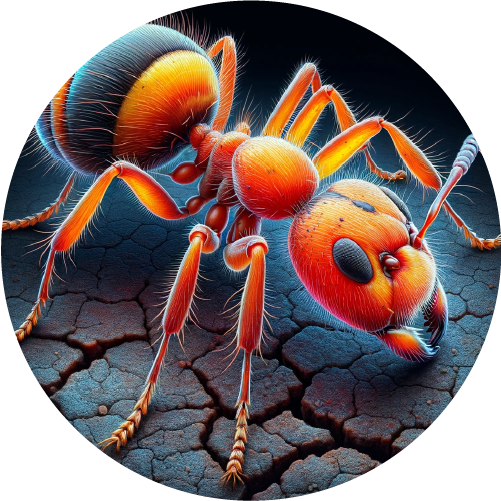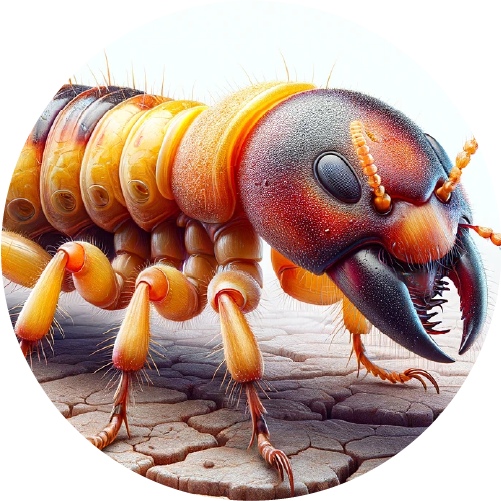Quality Guaranteed
BEE Control
Services


Get a Quote on our Bee Control
One-time Pest Control
- One single pest control service includes a comprehensive interior and exterior inspection and interior treatment only.
- If pests come back within 30 days of your initial treatment, we’ll come back at no additional cost to you.
- Perfect service to complete before listing your home to sell
Quarterly Pest Control
- Initial comprehensive interior1 and exterior inspection and treatment
- Ongoing interior and exterior treatments scheduled quarterly
- Guaranteed protection for as long as you keep your plan. If pests come back between treatments, so will we — at no additional cost to you2
1 Interior and exterior of primary residence only; not more than 1700 sqft
Bee Control: Protecting Your Home from Unwanted Guests
Understanding Bee Infiltration
Bee control is critical for homeowners. Bees, like the female carpenter bee, can cause structural damage. They often seek out wood surfaces to create entrance holes for their nesting sites. Understanding the nuances of bee infiltration is the first step towards effective bee control.
Identifying Bee Species for Effective Bee Control
Effective bee control starts with identification. Different bee species have different behaviors and nesting habits. While honey bees are known to live in colonies and produce honey, shiny black, female carpenter bees tend to be solitary and drill into wood to create their nests. Recognizing the specific bee type helps tailor the control method for better results.
Risks of Bee Infestations
Bee infestations can pose various risks to homeowners. Firstly, there’s the issue of structural damage. Carpenter bees, in particular, can weaken the wooden structures of your home over time. Secondly, bee stings can lead to allergic reactions in some individuals, making bee control essential for safety.
Moreover, the presence of wasp nests near homes also poses risks, especially if disturbed. Thus, prompt and effective bee control is essential for the well-being of your family and the integrity of your property.
DIY Bee Control Methods
For minor bee infestations, DIY bee control methods can help homeowners address the issue before it worsens. Here are some steps to consider:
- Inspect your property for signs of bee activity, such as entrance holes or nests.
- Remove attractants that might draw bees to your home, such as exposed food sources.
- Seal any entrance holes you find with appropriate materials to prevent further infestation.
However, it’s important to note that for larger or more severe bee problems, seeking professional help is often the safest and most effective course of action.
When to Call Professionals for Bee Removal
There are situations where calling in professionals for bee removal is the best choice:
- In cases of a bee emergency, where the infestation poses an immediate threat to your family.
- When there’s clear evidence of structural damage to your property caused by bees.
- For infestations that are beyond your ability to manage safely.
Professional bee control experts have the knowledge, tools, and protective gear to safely remove bee nests and provide long-term solutions to prevent future infestations.
Preventing Future Infiltrations
One of the keys to effective bee control is preventing future infiltrations. Here are some proactive steps you can take:
- Seal off potential nesting sites in and around your home, especially wood surfaces that might attract female carpenter bees.
- Maintain your property by addressing any wood damage promptly to discourage bees from creating nests.
By implementing these preventive measures, you can deter female carpenter bees from returning to your property.
Bee Control and Safety Considerations
When dealing with bee control, safety should always be a top priority. If you’re attempting to address a bee problem on your own, remember these safety considerations:
- Always wear appropriate protective clothing, including beekeeping suits and veils, when dealing with bees.
- Be cautious around male carpenter bees, as they can be territorial and may hover close to nesting sites.
Ensuring your safety during bee control procedures is essential to prevent bee stings and allergic reactions.
Understanding Wasp Behavior
It’s crucial to differentiate between bees and wasps, as their control methods differ. Wasps are often mistaken for bees due to their black and yellow markings. Understanding their behavior and nesting habits is essential for effective wasp control.
Dealing with Carpenter Bees
Carpenter bees, identified by their shiny black color, are known for boring into wood surfaces. To prevent reinfestation after bee control treatment, it’s vital to fill these holes properly. Sealing the entrance holes left by carpenter bees ensures that your home remains bee-free.
Conclusion on Bee Control
Bee control is a vital aspect of home maintenance, especially for those who have suffered from bee-related infiltration issues. Addressing bee problems early can prevent structural damage, bee stings, and allergic reactions.
For comprehensive and safe solutions, it’s advisable to reach out to bee control professionals who have the expertise to handle various bee species and ensure your home remains free from unwanted bee guests.
5 Treatment Methods
Bee Control

Frequently Asked Questions About Bees Control
Disclaimer: If you see evidence of bees control in your home within 3 months of your initial treatment date, On Target Pest Management will perform an inspection and provide necessary treatment at no extra cost. 3-month guarantee only available for single-family dwelling units. Limitations apply. Please call for details.
What is the purpose of carpenter bees drilling holes in wood?
Carpenter bees drill holes in wood primarily to create nesting sites. Female carpenter bees excavate these holes to lay their eggs, providing shelter and protection for their offspring. These holes serve as secure locations for their larvae to develop.
What are carpenter bees, and are they dangerous?
Carpenter bees are a type of solitary bee known for their shiny black appearance. While they may appear intimidating due to their size and appearance, they are generally not dangerous to humans. Male carpenter bees are unable to sting, and females are rarely aggressive unless provoked. They play a vital role in pollination
What are some tips for identifying carpenter bees?
Identifying carpenter bees involves observing their characteristics. They are typically large, robust bees with shiny black bodies. One distinctive feature is their habit of drilling perfectly round holes in wood for nesting.
Are carpenter bees dangerous to humans in any way?
Carpenter bees are generally not dangerous to humans. Male carpenter bees cannot sting, and females are seldom aggressive. However, if threatened or provoked, females may sting, but their stings are relatively mild, causing discomfort rather than severe reactions.
What's the fastest way to kill a spider?
The quickest method to kill spiders is direct contact with insecticides. On Target Pest Control can provide fast-acting spider treatment options suitable for immediate results.
Do carpenter bees sting?
Yes, female carpenter bees can sting if they feel threatened or cornered. Their stings can cause mild discomfort and localized pain but are not typically as painful or dangerous as the stings of some other bee species.
How would you describe how carpenter bees eat?
Carpenter bees primarily feed on nectar from flowers. They use their long tongues to extract nectar from blossoms. This feeding behavior plays a crucial role in pollinating various plant species.
Do carpenter bees live in colonies like other bee species?
No, carpenter bees are solitary bees. Unlike honey bees and bumblebees, which live in colonies with a division of labor, carpenter bees do not form colonies. Each female carpenter bee creates her own nest and tends to her offspring independently.
What is a carpenter bee?
Gaining the trust of bumblebees or any other wild bee species is not a common practice. It’s generally best to observe and respect their behavior from a safe distance in their natural habitat to avoid disturbing them.
Do honeybees build their nests on balconies or porches?
Honeybees typically do not build their nests on balconies or porches. They prefer more secluded locations, such as tree hollows or specially designed hives managed by beekeepers.
Is it illegal to keep bees in your backyard?
The legality of keeping bees in your backyard can vary depending on local regulations and zoning laws. In many areas, it is legal to keep a limited number of beehives, but specific rules and permits may apply. It’s important to check with your local authorities and follow any guidelines or regulations in your area.
Does a dead bee actually attract other bees to it?
Yes, the scent of a dead bee can attract other bees, especially if they belong to the same species. Bees are social insects, and the presence of a dead bee can trigger an investigation by other members of the colony.
(on Initital Service) Thereafter included upon request












